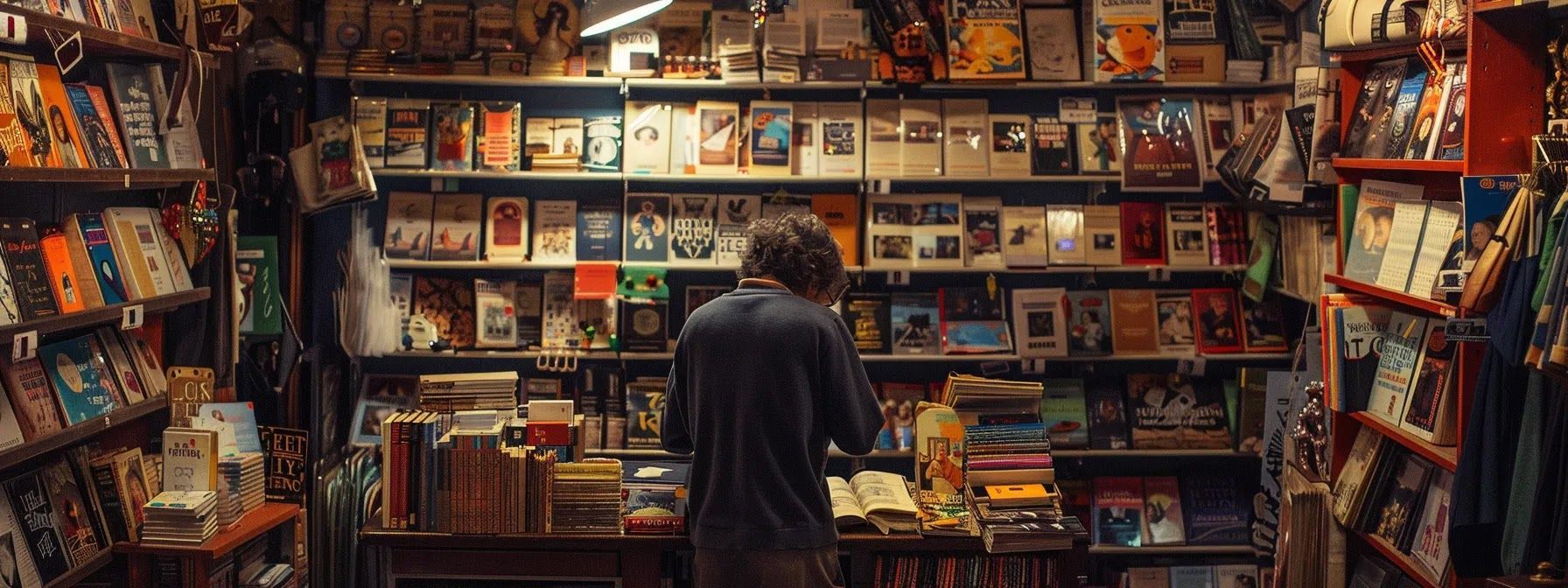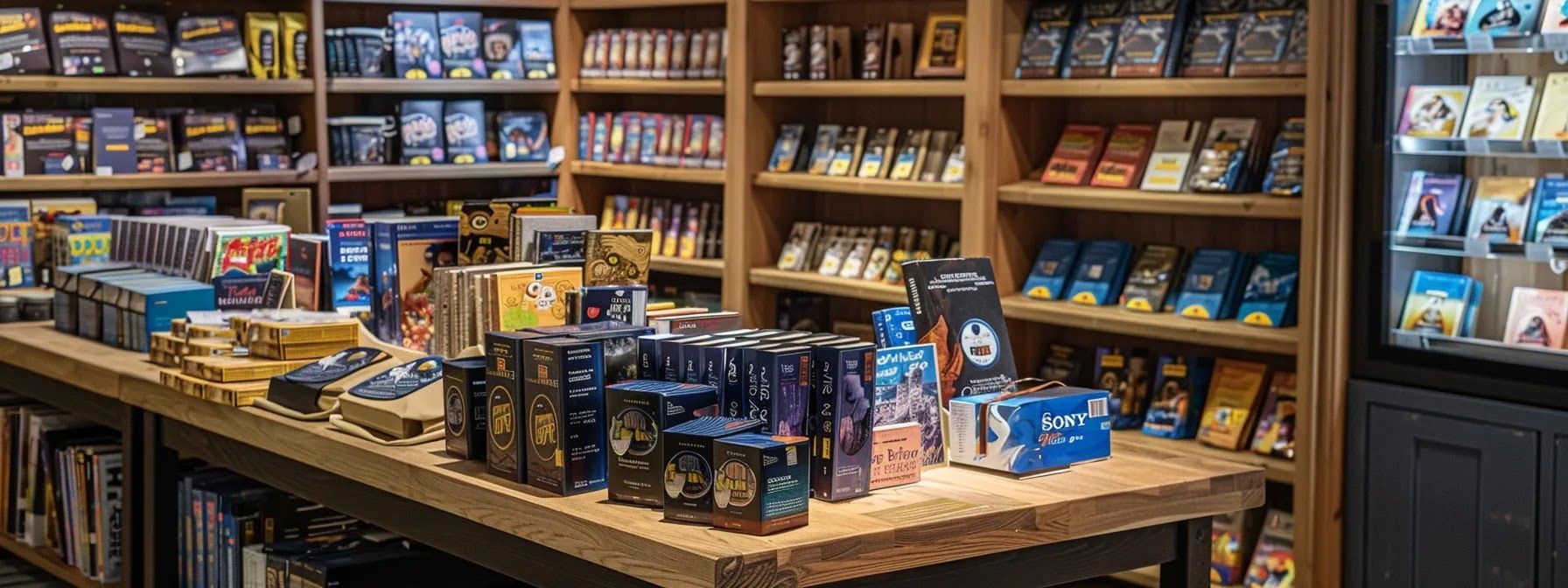Crafting Your Book's Merchandise Line: A Step-by-Step Guide
Turning your book into a brand doesn’t end with the final chapter. Creating merchandise based on your book allows you to offer fans something tangible while opening up new income streams. Book-themed merchandise can amplify your story's reach, whether it’s a mug with your novel’s cover or a poster featuring your most iconic quote. As you plan your launch, consider timing it with book-related events or seasonal trends, and don’t forget the power of influencers to showcase your products. Follow along to learn how to craft a successful merchandise line that reflects your unique literary world.
KEY TAKEAWAYS
- Authors can expand their brand by creating merchandise that resonates with readers.
- Effective book merchandise reflects the book's themes and deepens fan engagement.
- Collaborating with artists can bring fresh perspectives and unique designs to merchandise.
- Authors must carefully select manufacturers who understand their vision for book-related items.
- Analyzing sales data and customer feedback helps authors make informed decisions about expanding their product line.

Deciding on Your Book Merchandise Strategy
Authors can expand their brand beyond the pages of their books by creating merchandise that resonates with readers. A well-planned book merchandise strategy considers audience interests, reflects the book's themes, and sets clear goals. Authors can offer a range of merch that deepens fan engagement from fantasy-inspired designs to practical items like notebooks. While there may be upfront design and production fees, a thoughtful approach to merchandise can create additional revenue streams and strengthen the connection between authors and their readers.
Assess Your Audience's Interests
Authors must understand their readers' preferences before creating merchandise. Conducting surveys, analyzing social media engagement, and reviewing frequently asked questions (FAQs) can reveal valuable insights into what fans want to see in a merchandise line.
The genre of the book often influences merchandise choices, with fantasy novels lending themselves to unique items like enamel pins or custom-designed buttons. Authors can test the waters using print-on-demand services like Redbubble, allowing easy online shopping without significant upfront investments.
Choose Merchandise That Reflects Your Book's Themes
Effective merchandising reflects the book's themes and resonates with readers. Authors should select items that capture the essence of their story, whether it's clothing adorned with memorable quotes or mugs featuring iconic symbols from the narrative. Skipping generic products in favor of those that align closely with the book's world ensures a stronger connection with fans.
Some authors license their intellectual property to established merchandising companies, allowing for broader distribution and professional design. This approach can lead to diverse high-quality items embodying the book's spirit, from themed board games to collectible figurines.
Set Clear Goals for Your Merchandise Line
Authors should establish clear objectives for their merchandise line: to generate additional income, boost brand awareness, or provide fans with unique gifts. These goals will guide product selection, pricing, and marketing strategies, ensuring the merchandise aligns with the author's overall brand and book promotion efforts.
Gathering information on fan preferences through social media and word-of-mouth feedback can help refine merchandise offerings. Authors might consider creating limited edition or "silver anniversary" items to celebrate milestones, which can drive excitement and sales while fostering a stronger connection with dedicated readers.
Designing Your Book's Merchandise
Authors seeking to create merchandise for their books can embark on an exciting design journey. This process involves highlighting key elements from the novel, collaborating with talented artists for unique designs, and finalizing concepts that resonate with readers. Like the iconic merchandise from franchises such as Star Wars, authors can develop ideas that capture the essence of their story through captivating imagery. By focusing on these aspects, writers can craft a merchandise line that promotes their book and deepens fan engagement.
Identifying Elements of Your Book to Highlight
Authors can identify unique elements from their books to create eye-catching merchandise. Characters, settings, and memorable quotes often grab readers' attention and translate well onto items like bags or t-shirts.
The book's cover art, symbols, or recurring motifs also make excellent choices for merchandise designs. Authors should consider the price point of their items and how they can collect customer email addresses for future marketing efforts.
Collaborating With Artists for Unique Designs
Authors can enhance their merchandise line by collaborating with talented artists. These partnerships bring fresh perspectives and unique designs that capture the book's essence, creating special edition items that resonate with the reader community.
Collaborating with artists adds value to the merchandise and opens up new marketing opportunities. Authors can showcase the creative process, engage fans through behind-the-scenes content, and potentially increase profit margins by offering limited-run, artist-designed products that command higher prices due to their exclusivity and artistic merit.
Finalizing Designs That Resonate With Your Audience
Authors must carefully select designs that resonate with their target audience to create successful merchandise. They should consider the book's world and how it translates into tangible products, ensuring the logo and artwork capture the essence of the story. Consumer feedback is crucial in this process, helping authors refine their designs to meet reader expectations.
Before finalizing designs, authors should test different options with a small group of dedicated fans. This approach allows them to gauge reactions and make necessary adjustments before committing to large-scale production. Once designs are finalized, authors can explore various payment options to make purchasing merchandise convenient for their readers.

Manufacturing Options for Your Book's Merchandise
Authors venturing into promotional merchandise for their books face crucial decisions about manufacturing. From self-made production to outsourcing, each option offers unique advantages for creating items like gift cards, ebooks, or font-inspired products. The choice of manufacturing method can significantly impact the publishing journey, affecting costs, quality control, and scalability. As authors explore these options, they must weigh factors such as production volume, design complexity, and target market to select the right manufacturer for their book-related merchandise.
Exploring Self-Made Production
Writers can explore self-made production for their book merchandise, starting with simple items like bookmarks, pens, and tote bags. These products allow authors to showcase their creativity and personal touch, often incorporating their own art or designs that reflect their book's themes.
Self-made production gives writers control over quality and costs but requires time and effort. Authors may find satisfaction in crafting unique items for their readers, such as hand-stamped bookmarks or custom-painted tote bags, creating a more intimate connection with their audience.
Pros and Cons of Outsourcing Production
Outsourcing production for book merchandise offers authors several advantages. Professional manufacturers can produce high-quality items at scale, from tote bags featuring book cover designs to custom USB drives containing bonus stories. This approach allows writers to focus on their fiction while experts handle the manufacturing process.
However, outsourcing also comes with potential drawbacks. Authors may face higher upfront costs in USD and have less control over the production process. They might also struggle to find manufacturers who understand their vision for items representing their books' themes.
Selecting the Right Manufacturer
Authors must carefully select manufacturers who can bring their book-related merchandise to life. They should look for partners who understand intellectual property rights and can produce high-quality swag that aligns with the book's themes. Manufacturers should offer a range of products, from hoodies to digital advertising materials, to help authors diversify their merchandise offerings and boost income.
Authors should consider factors such as production capacity, pricing, and customer service when choosing a manufacturer. They should request samples to assess quality and communicate their vision clearly to ensure the final products accurately represent their brand.

Setting Up an Online Store for Your Book Merchandise
Authors can boost their revenue and expand their brand by setting up an online store for book merchandise. This digital storefront allows writers to connect with their target audience beyond the pages of their novels, offering fans tangible items inspired by beloved stories. From choosing the right e-commerce platform to crafting compelling product descriptions and implementing effective marketing strategies, authors can create a thriving online presence that complements their published works. By partnering with publishers or going solo, writers can transform their literary creations into a diverse range of merchandise, from paper goods to wearable items, fostering a deeper connection with readers while generating additional income streams.
Choosing the Best Platform for Your Merch Store
Authors must carefully select an e-commerce platform that suits their needs when selling book merchandise online. Many writers opt for print-on-demand services that handle production and shipping, allowing them to offer items like coloring books or stickers without holding inventory. These platforms often integrate seamlessly with existing author websites, making it easy for fans to purchase merchandise alongside e-books or physical copies of their favorite novels.
Some authors choose to create their own online stores using platforms like Shopify or WooCommerce, which offer more control over branding and product offerings. This approach allows writers to sell unique items, such as branded tea collections inspired by their books, providing readers with a more personalized shopping experience. However, it requires more hands-on management and may involve higher upfront costs than print-on-demand options.
Creating Engaging Product Descriptions
Authors can create engaging product descriptions for their book merchandise by highlighting the connection between the items and their stories. Brainstorming sessions can help writers develop unique angles for each product, such as explaining how a piece of jewelry reflects a character's personality or how a graphic tee captures a pivotal moment in the plot.
Effective product descriptions should also reinforce the author's brand, using consistent language and tone across all merchandise. Writers can encourage newsletter sign-ups directly on product pages, offering exclusive content or early access to new items as an incentive for subscribers, further strengthening the bond between author and reader.
Effective Marketing Strategies for Your Store
Authors can leverage social media platforms to showcase their book merchandise, partnering with illustrators to create eye-catching fan art that resonates with readers. Engaging with fans through live streams or Q&A sessions can build excitement around new products and drive traffic to the online store, potentially increasing sales and generating more money for the author.
Providing exceptional customer service is crucial for maintaining a loyal customer base and encouraging repeat purchases. Authors should respond promptly to inquiries, offer personalized recommendations, and consider implementing a rewards program for frequent buyers to foster a sense of community around their merchandise line.

Pricing and Promoting Your Book Merchandise
Authors who venture into merchandise creation for their books must navigate the intricacies of pricing and promotion to ensure success. Like the popular "Game of Thrones" franchise, which expanded its intellectual property into various merchandise lines, writers can transform their literary worlds into tangible products. Setting competitive prices requires careful cost calculation, while leveraging social media platforms and engaging with fans through merchandise can create buzz similar to a well-promoted podcast. By mastering these aspects, authors can turn their book-inspired items into sought-after collectibles, fostering a deeper connection with readers and potentially opening new revenue streams.
Calculating Costs and Setting Competitive Prices
Authors must carefully calculate costs when pricing their book merchandise. They should consider factors such as production expenses, shipping fees, and potential profit margins to set competitive prices that appeal to readers while ensuring a sustainable business model.
Market research is crucial in determining appropriate price points for book-related items. Authors can analyze similar products offered by other writers or publishers to gauge industry standards and adjust their pricing strategy accordingly, striking a balance between affordability and perceived value.
Leveraging Social Media for Promotion
Authors can harness the power of social media to promote their book merchandise effectively. They can create visually appealing posts showcasing their products, use relevant hashtags to increase visibility and engage with followers through interactive content like polls or Q&A sessions.
Collaborating with book bloggers or influencers can amplify the reach of merchandise promotions. Authors can offer exclusive discount codes or limited-time offers to their social media followers, creating a sense of urgency and encouraging purchases.
Engaging With Your Audience Through Your Merch
Authors can engage their audience through book merchandise by creating limited-edition items that spark excitement and foster a sense of exclusivity among readers. They can organize merchandise-related contests or giveaways, encouraging fans to share photos of themselves with the products on social media, thus generating organic promotion and strengthening the community around their books.
Writers can also use merchandise to gather feedback and ideas from their audience. By including QR codes on product packaging that link to surveys or discussion forums, authors can gain valuable insights into reader preferences and potentially inspire future storylines or merchandise designs.

Expanding Your Merchandise Line Over Time
Authors who venture into merchandise creation often find that expanding their product line is a natural progression. As readers engage with initial offerings, opportunities arise to diversify and enhance the merchandise selection. By actively seeking customer feedback, analyzing sales data, and staying attuned to market trends, writers can make informed decisions about introducing new items. This approach keeps the merchandise line fresh and exciting and demonstrates a commitment to meeting fan expectations. As authors navigate this process, they can create a dynamic and evolving collection of products that resonates with their audience long after the initial book release.
Collecting Customer Feedback for Future Products
Authors can gather valuable customer feedback to guide future merchandise decisions. They can use surveys, social media polls, and email questionnaires to understand what products resonate with their readers and what new items they desire.
Writers should pay attention to comments on their online store and social media platforms, as these often contain unsolicited but honest opinions about existing products and suggestions for new ones. This ongoing dialogue with fans helps authors create merchandise that truly meets their audience's needs and preferences.
Analyzing Sales Data to Identify Bestsellers
Authors should regularly analyze sales data to identify their bestselling merchandise items. This information helps writers focus on products that resonate most with their audience, allowing them to make informed decisions about expanding their product line.
By tracking sales trends over time, authors can spot seasonal patterns or spikes in demand related to book events or promotions. This insight enables them to plan inventory and introduce new products strategically, maximizing their merchandise line's potential:
- Review monthly sales reports
- Identify top-selling items
- Note seasonal trends
- Compare sales to marketing efforts
- Adjust inventory based on demand
Introducing New Merchandise Based on Trends and Feedback
Authors can introduce new merchandise based on emerging trends and reader feedback. They should stay informed about popular culture and book-related trends, adapting their product line to include items that align with current interests while remaining true to their brand.
Writers can test new product ideas through limited runs or pre-orders, gauging customer interest before committing to large-scale production. This approach minimizes risk and allows authors to refine their offerings based on real-world demand.
Conclusion
Crafting a book's merchandise line empowers authors to expand their brand beyond the pages, offering fans tangible connections to their favorite stories. A well-planned strategy, from design to manufacturing and promotion, can create additional revenue streams and strengthen the bond between writers and readers. Authors can create a thriving merchandise ecosystem by carefully selecting products that reflect the book's themes, setting up an efficient online store, and engaging with audiences through social media. As the product line grows and evolves based on customer feedback and sales data, authors can continue to delight their fans and create lasting value from their literary creations.
© 2024 All Rights Reserved | Keira Brinton
All Rights Reserved | Keira Brinton | Website Design by Tally Creative














